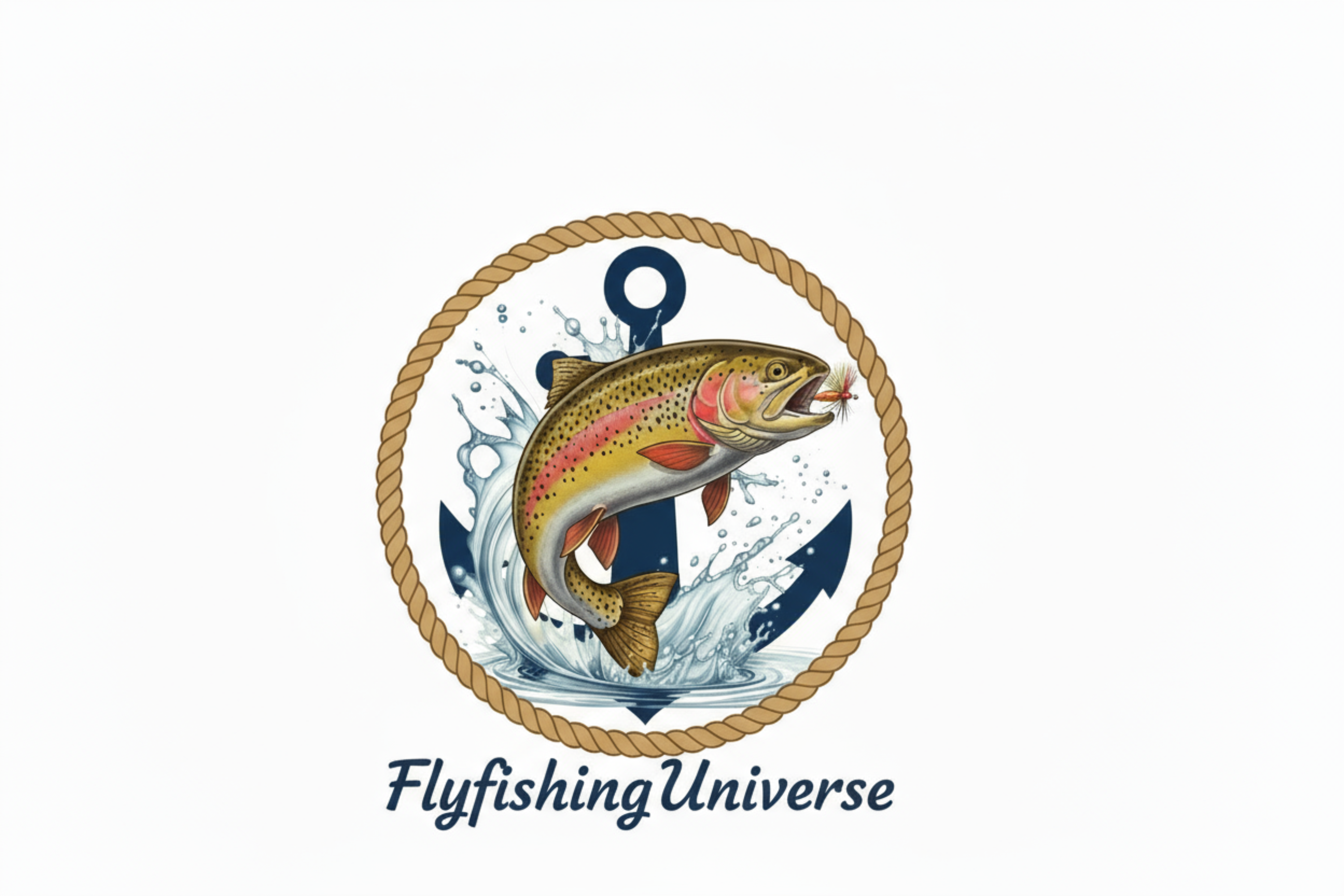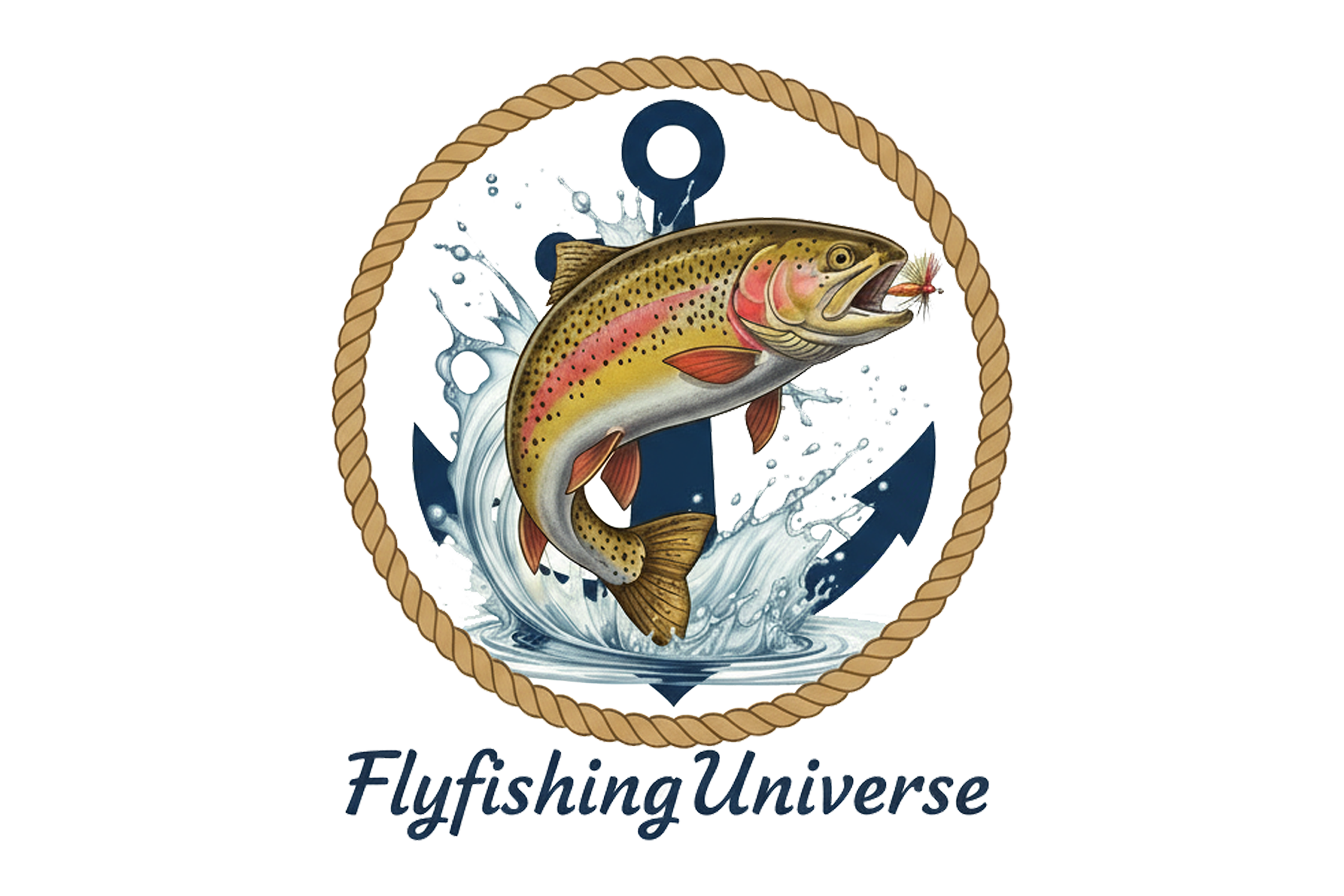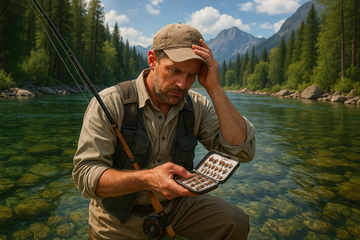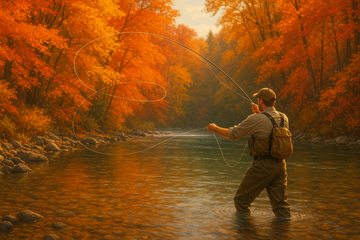How to Fly Fish Successfully After Rain: Expert Tips, Tactics & Fly Selection
by Mohamad Abdulkarim on Oct 18, 2025
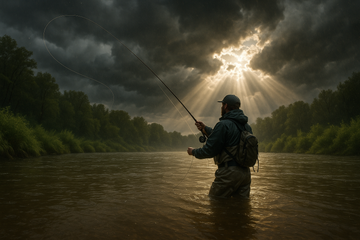
Why Post-Rain Fly Fishing Can Be Incredibly Productive
Rain transforms rivers and streams, creating some of the most exciting fly fishing opportunities of the season. While many anglers pack up when the skies darken, experienced fly fishers know that the period immediately after rainfall can trigger aggressive feeding behavior and produce trophy catches.
Understanding how to adapt your tactics, fly selection, and approach after a rainstorm is the key to success. In this comprehensive guide, we'll cover everything you need to know about fly fishing after rain—what works, what doesn't, and which flies to tie on.
What Happens to Fish After It Rains?
Rainfall dramatically changes the aquatic environment in several ways:
- Increased oxygen levels: Rain oxygenates the water, making fish more active and willing to feed
- Food influx: Terrestrial insects, worms, and other food sources get washed into the water
- Water level rise: Higher water opens up new feeding lanes and holding spots
- Reduced visibility: Murky water makes fish less cautious and more aggressive
- Temperature changes: Cool rain can lower water temperatures, triggering feeding activity in warm conditions
When to Fish After Rain: Timing Is Everything
The best time to fish after rain depends on the intensity and duration of the storm:
Light to Moderate Rain (Best Conditions): Fish during and immediately after the rain. Water clarity remains good, and fish are actively feeding on insects knocked into the water.
Heavy Rain: Wait 6-24 hours for water levels to stabilize and clarity to improve slightly. Extremely muddy water makes it difficult for fish to see your flies.
Multi-Day Rain: Focus on tributary mouths, spring creeks, and areas with clearer water mixing with stained main flows.
What Flies to Use After Rain: Proven Patterns
Streamers: The Go-To Choice for Murky Water
When water visibility drops, streamers become your most effective weapon. Fish rely more on vibration and silhouette in stained water, making large, dark, and articulated patterns ideal.
Top Streamer Recommendations:

The Wooly Bugger Leech Hybrid Fly is an absolute must-have for post-rain conditions. This premium streamer excels in murky water with its pulsating marabou tail and buggy profile that creates maximum movement. Effective for trout, bass, and pike, it's the first fly you should tie on when water clarity drops.

The Egg Sucking Leech Fly with its tungsten bead head gets down fast in higher water flows. The bright egg head provides a strike trigger point even in stained conditions, making it deadly for trout, steelhead, and salmon after rainfall.

For aggressive species in high water, the MO's Congo Attack Streamer is unbeatable. Tied on a Gamakatsu 4/0 sharp hook, this pattern pushes water and creates vibration that striped bass, bluefish, peacock bass, and smallmouth can detect even in chocolate-colored water.
Nymphs: When Water Begins to Clear
As water clarity improves 12-24 hours after rain, nymphs become increasingly effective. Focus on weighted patterns that get down quickly in faster currents.

The Perdigon Euro Nymphs Flies Assortment features tungsten-weighted patterns that sink fast and maintain depth in swift post-rain currents. These proven euro-style nymphs in sizes 14 and 18 are perfect for technical presentations as water levels drop.

Our Euro Nymph Assortment provides a complete selection of specialty patterns designed for post-rain conditions. These exclusive flies are proven trout catchers when fish are feeding heavily on dislodged nymphs and larvae.
Post-Rain Fly Fishing Tactics: What to Do
✓ DO: Fish Slower Water and Seams
After rain, fish move to areas with reduced current where they can conserve energy while still accessing food. Target:
- Current seams where fast and slow water meet
- Eddies and back currents
- Bank edges with overhanging vegetation
- Pocket water behind boulders and structure
✓ DO: Use Larger, Darker Flies
In stained water, visibility is limited. Fish can more easily detect:
- Larger silhouettes (size 4-8 streamers)
- Dark colors (black, olive, brown, purple)
- Flies with movement (marabou, rubber legs, articulation)
- Patterns with flash or bright trigger points
✓ DO: Slow Your Retrieve
Fish are less willing to chase in higher, colder water. Use slow, methodical strips with long pauses. Let streamers swing and hang in the current.
✓ DO: Focus on Structure
Logs, undercut banks, bridge pilings, and boulder fields provide refuge from increased current and ambush points for feeding fish.
✓ DO: Add Weight
Higher water flows require additional weight to get your flies into the strike zone. Use split shot, weighted flies, or sink-tip lines to maintain depth.
Post-Rain Fly Fishing: What NOT to Do
✗ DON'T: Fish Extremely Muddy Water
If you can't see your hand 6 inches below the surface, visibility is too poor. Fish can't see your flies, and you're wasting your time. Wait for some clearing.
✗ DON'T: Use Small, Subtle Flies
Size 18-22 midges and delicate dry flies are ineffective in stained, high water. Save these for clear, low-water conditions.
✗ DON'T: Fish the Fastest Current
The main channel's heaviest flow is exhausting for fish. They'll be positioned in softer water adjacent to the main current.
✗ DON'T: Ignore Safety
Rising water can be dangerous. Avoid wading in swift current, watch for debris, and never cross water you're unsure about. If water is rising rapidly, leave immediately.
✗ DON'T: Overlook Tributaries
While the main river may be blown out, smaller tributaries often clear faster and concentrate fish. These can be your best bet after heavy rain.
Reading Water After Rain: Where Fish Hold
Post-rain water reading requires adjusting your approach:
High Water Zones:
- Inside bends where current slows
- Flooded bank vegetation and newly submerged structure
- Tail-outs where current disperses
- Deep pools with moderate flow
Clearing Water Zones:
- Tributary confluences with clearer water
- Spring creek inputs
- Riffles and runs as water drops
- Traditional holding water as conditions normalize
Gear Considerations for Post-Rain Fishing
- Leaders: Use shorter, heavier leaders (7.5-9 feet, 2X-4X) for better turnover with weighted flies
- Tippet: Fluorocarbon sinks faster and is less visible in stained water
- Lines: Sink-tip or full-sink lines for streamers; weighted nymph rigs for subsurface presentations
- Indicators: Larger, high-visibility indicators help track drifts in choppy water
Species-Specific Post-Rain Strategies
Trout: Focus on soft water near banks, use streamers and large nymphs, fish slower than normal
Bass (Smallmouth/Largemouth): Target flooded vegetation and structure, use dark streamers with aggressive retrieves
Steelhead/Salmon: Fresh rain brings fish upstream—focus on runs and tail-outs with egg patterns and leeches
Pike: Hunt shallow, flooded areas with large, flashy streamers retrieved with erratic strips
Final Tips for Post-Rain Success
- Be patient: Give the water time to stabilize for best results
- Stay mobile: Move frequently to find active fish and optimal water clarity
- Experiment: Try different depths, retrieves, and fly sizes until you find what works
- Watch the forecast: Plan trips for the clearing phase after rain, not during peak runoff
- Keep a log: Note water conditions, successful flies, and locations for future reference
Conclusion: Embrace the Rain
Don't let rain keep you off the water. Some of the most memorable fly fishing experiences happen when conditions are less than perfect. By understanding how rain affects fish behavior, selecting the right flies, and adapting your tactics, you can turn stormy weather into your competitive advantage.
Stock your fly box with proven post-rain patterns like our Wooly Bugger Leech Hybrid, Egg Sucking Leech, Congo Attack Streamer, and Euro Nymph assortments. When other anglers are waiting for "perfect" conditions, you'll be landing fish.
Tight lines and wet wades!
